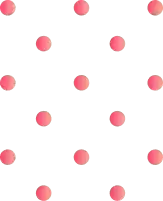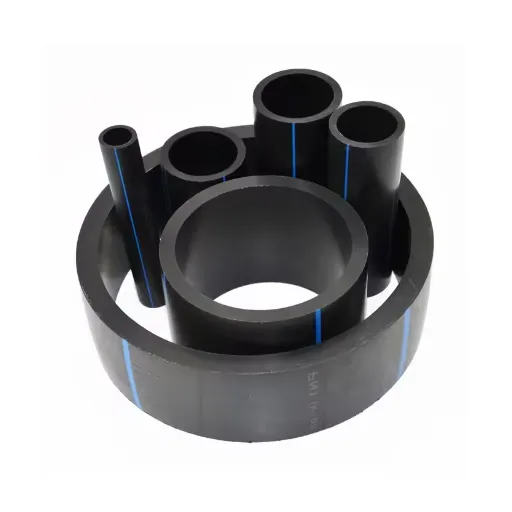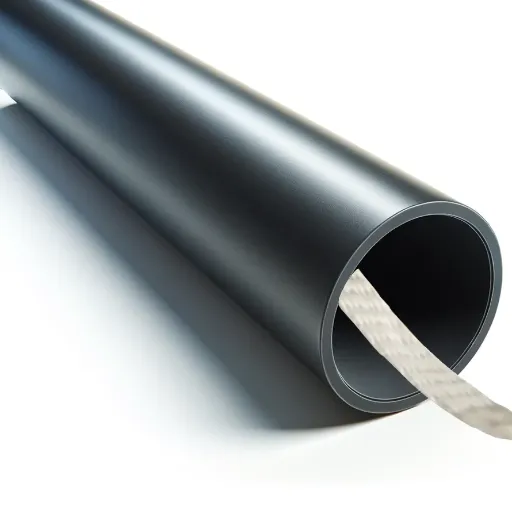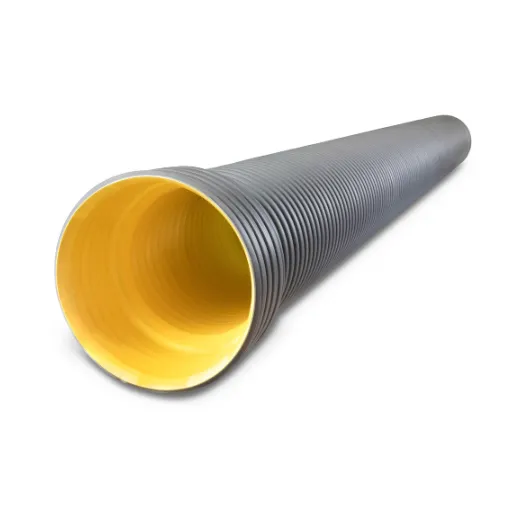When designing a French drain system, one of the most critical decisions involves selecting the appropriate type of pipe. The two most commonly used options are corrugated and PVC pipes, each with distinct characteristics that make them suitable for specific applications. Understanding the structural differences, durability, cost, and installation requirements of these materials is essential to ensure optimal performance and longevity of your drainage system. This article will provide a detailed comparison of corrugated and PVC pipes, offering insights into their advantages and limitations to help you determine which option is best suited for your French drain needs.
Corrugated Pipe: Pros and Cons for French Drains
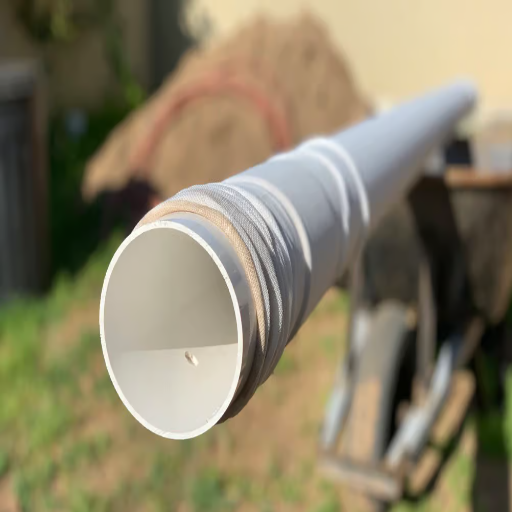
What is corrugated pipe, and how does it work?
A pipe with a circular cross-section known as a dual-walled pipe is a type of lightweight flexible piping usually employed in systems for the extraction or the movement of moisture within earth structures, such as French drains. It is made of High-Density Polyethylene (HDPE), which, besides giving it strength, also makes it resistant to corrosion. The pipe has a contoured surface that allows it to bend while enabling the fitting of seamed expansion couplings on the pipe. This feature improves its utility for use in residential and landscape drainage systems.
- Material Durability: Polyethylene (HDPE) has high resistance to chemicals and environmental effects, and is particularly resistant to wear and tear. These qualities make it suitable for use in drainage systems over long periods.
- Internal Diameter: For standard French drains, it is common to have an internal diameter of between 4 to 8 inches, which optimizes flow rate and remains handleable.
- Perforation Design: The design that incorporates perforations on the pipe, which are filters or slots that allow the passage of water but prevent it from clogging filters, combined with either geotextile fabric.
- Weight: The dual-wall pipe can be made easy to transported and installed due to its lightweight, which to lessen the amount of time and money spent on labor.
All dual-wall pipes operate by gathering flooding water into their perforations, which removes hydrostatic forces and water accumulation. Their flexibility makes them work effectively on soils with shifting surface patterns, though care has to be taken to clean them regularly to avoid clogging.
Advantages of using corrugated pipe in French drains
- Durability and Longevity: Corrugated pipes are usually made from High Density Polyethylene (HDPE), which is famed for being resistant to corrosion, chemicals, and physical abrasion. This guarantees long-term performance even in off-putting underground conditions.
- Efficient Water Flow Management: The rigid Design of corrugated pipes helps channel the water through various perforations, lessening hydrostatic pressure while inhibiting the accumulation of water on the surface. The pipe’s flexibility ensures that it works in various soil types without any loss in functionality.
- Lightweight for Easy Installation: Corrugated pipes are a lot lighter than solid pipes, thus making their transportation and installation a lot easier and cheaper. This lessens and speeds up the overall laborious efforts and construction work needed.
- Flexibility for Uneven Terrain: The flexible nature of corrugated pipes makes it possible to install them in uneven or shifting soils. They can bend to follow the natural contour of the land and do not need bulky fittings.
- Cost-Effectiveness: Compared to rigid pipes, corrugated pipes are much easier on the pocket. Lowering material costs, less construction labor, and requiring little maintenance make it a savvy economic decision.
Having all these advantages considered, corrugated pipes serve as a trustworthy option for intensified drainage and long-term stability of the soil in French drills.
Potential drawbacks of corrugated pipe installations
- Clogging Susceptibility: Compared to smooth-walled alternatives, the ribbed structure inside corrugated pipes tends to capture more debris. Over time, this can promote clogging, especially where there is a high organic or sedimentary deposit. Regular flushing and jet cleaning are effective, but remember, maintenance is key.
- Durability Concerns: As useful as corrugated pipes are, they are generally more flexible and cost-effective compared to rigid material PVC or HDPE, but this comes at a cost. Corrugated pipes are not as durable as PVC or HDPE under heavy loads. During installation, ensure to keep depths under sufficient external pressures to enhance structural integrity.
- Flow Efficiency Limitations: If power efficiency is your primary concern, consider switching to smooth-walled pipes if that is a possibility. Corrugated pipes have increased internal resistance, meaning it is more difficult for water to flow through. For precise flow applications, be ready to factor in manifolds’ rougher coefficients, roughly 0.024 for pipes with corrugated walls and 0.009 for smooth-wall pipes.
- UV Degradation: Polyethylene, Polypropylene pipes, and other types of corrugated plastic pipes tend to break apart under strong UV radiation for too long. This limits their applications to buried ones, as covering the pipes without sufficient protective measures can shorten their lifespan.
- Obstacles in Installation: Although the installation how and the inclination of the site do not affect the working area of the pipe, it may result in sagging or insufficient slopes, which will disrupt the functioning of drainage. Improper installation methods, such as backfill compaction and slope determination precision, should be followed so that the pipe works under ideal conditions.
The Planning and Installation stages of the corrugated pipe system are precisely the points where these issues must be dealt with to guarantee that the system will work in the long term.
PVC Pipe: Advantages and Disadvantages for Drainage
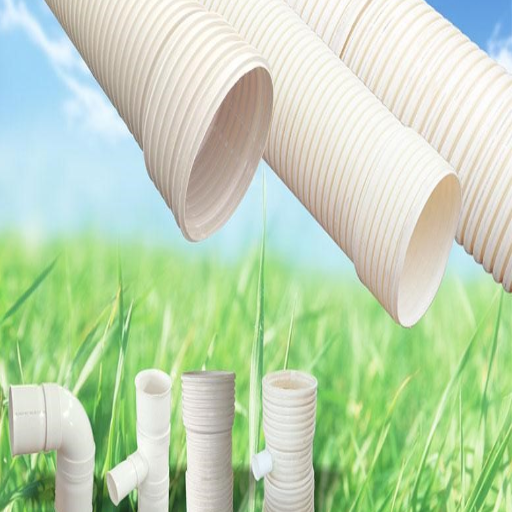
Understanding PVC pipe types and specifications
PVC pipes come in several varieties, each curated for a specific use case based on criteria such as wall thickness, pressure rating, and chemical resistance. The most common types are:
- PVC-U (Unplasticized PVC): This type has excellent rigidity, hence it is commonly used in water supply and drainage systems. It has high corrosion resistance and is light and cost-effective. PVC-U has a typical pressure rating of PN6 to PN16, making it suitable for medium-pressure applications.
- C-PVC (Chlorinated PVC): C-PVC pipes have enhanced thermal resistance and are used for hot water systems and industrial liquid transport. This type of PVC can handle temperatures of 200°F (93°C) and has better fire resistance than standard PVC.
- PVC-O (Oriented PVC): The molecular structure of PVC-O pipes is engineered, which realigns the molecular structure and provides higher strength and flexibility. These pipes are used in high-pressure water distribution and irrigation systems, which is why the pressure classifications are often in the PN16 to PN25 range.
- PVC-M (Modified PVC): PVC-M pipes are reinforced with modifiers that give them enhanced impact tolerance. These pipes are preferable in critical applications such as mining and buried infrastructure because they have high toughness and load resistance.
When choosing and designing a piping or drainage solution, Australian standards such as ASTM D1785 for PVC pipes and ISO 1452 for PVC-U systems must be taken into account. Adhering to these specifications guarantees remarkable efficiency and strength during use.
Benefits of using PVC pipe in French drain systems
- Durability and Longevity: PVC pipes are corrosion-resistant and degrade minimally in the presence of moisture or soil atmosphere. Studies show that PVC piping may last for more than 50 years in the normal conditioning of the ground, hence an excellent choice for drainage systems for a longer period.
- High Load-Bearing Capacity: PVC pipes differ in this from some other pipe materials. They are engineered to bear substantially huge external loads without deformation. This makes it appropriate for locations that are heavy with soil loads or experience ground movement, thereby ensuring proper structuring with time.
- Ease of Installation: Lightweight PVC pipes are easy to work with, thereby reducing installation time as well as labor costs. They have smooth exteriors and uniform shapes which allow Kat to cut easily and join together to be rightly situated while performing the functions of French drain systems.
- Enhanced Flow Efficiency: The inner surface of the pipe is very smooth, offering the least friction and clogging possibilities. Thus, water flow is maintained at an optimum velocity, irrespective of systems with large water movement. According to test data, PVC drains are capable of maintaining a flow rate for a fairly long period, unlike their corrugated counterparts.
- Resistance to Biological Growth: The nonporous nature of the PVC very much reduces occurrences of biofilm or root intrusion, common issues with other pipe materials. With this restriction, the French drain shall continue its operations with minimal maintenance, thus assuring performance and reducing costs for maintenance.
Using PVC pipes in French drain systems thus guarantees efficiency, lesser maintenance, and lifespan, all important considerations in an efficient water management solution.
Limitations of PVC pipe in landscape drainage
To me, one of the main limitations of using PVC piping in landscape drainage is that it cracks when under undue pressure or when the soil undergoes some movement. Thus, rigid and hard under ordinary situations, PVC pipes can lose their toughness as they grow older, particularly under extensive UV radiation or freezing temperatures. Increased fragility can lead to further damage, resulting in leaks, which in turn affect drainage efficiency.
Another important one I treasure is the low flexibility of PVC pipes, which is another minor disadvantage compared to alternatives like corrugated pipes. Such a feature of rigidity does not allow them to easily follow uneven terrain or any installation that requires constant changes in direction. This drawback can be highly detrimental to construction time and cost, as the extra fittings and joined connections are demanded for the required layout.
Lastly, installation of PVC pipes in large-scale drainage works can offer problems because of their heavier weight and less user-friendly characteristics in handling. Whereas PVC pipes of smaller diameter pose fewer challenges to handle, PVC pipes of bigger diameter are heavy and difficult to cut with ordinary tools and join satisfactorily. Such difficulty of handling may give inefficiencies when working, even more so in limited space working areas or with restricted access.
How Do Corrugated and PVC Pipes Compare in Durability?
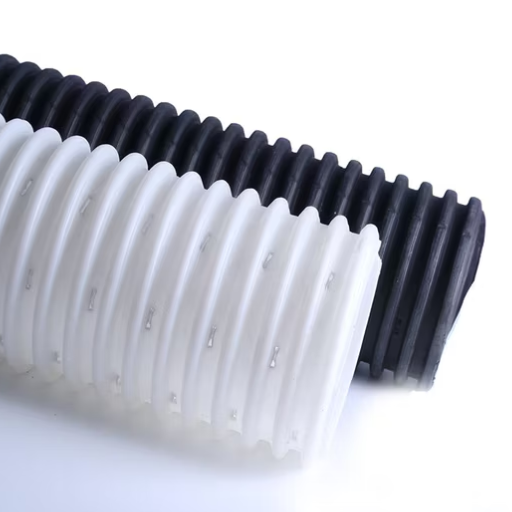
Resistance to crushing and soil pressure
The flexibility of a corrugated pipe makes it uniquely efficient at dealing with soil pressure compared to PVC pipes. This adaptability also lessens the chances of failure under high stress or harsh soil conditions. Typically, firm backfilled pipes are rated 30 cm and above in distance, in load-bearing setups, corrugated pipes are placed 30 cm below ground level.
In contrast, PVC pipes have poor resistance to compaction and high soil pressure. Although their tensile resistance is higher than other types at ranges of 2000 to 4000 psi, they are fundamentally weaker under uneven wearing or soil conditions. Particular care must be taken in PVC installations, as trench depth as well as granular embedment installation is crucial to prevent cracking and deformation.
In many cases and for certain types of applications that deal with harsh loads and soil conditions, corrugated pipes are shown to perform better than PVC pipes, assuming the setup meets engineering standards.
Impact of temperature changes on pipe materials
Temperature changes can greatly affect the structural performance and life of the materials used in the pipes. In the case of PVC pipes, thermal expansion and contraction are of utmost importance because PVC has a linear thermal expansion coefficient of roughly 0.00005 in./in./°F. This means significant changes in length may occur with temperature changes. A good example is a 100-foot-long PVC pipe that is subject to a 50°F temperature change. Such a pipe will expand or contract about 3/8 inch. Proper measures, like expansion joints, need to be taken to reduce stress and possible deformation.
Steel and ductile iron pipes, like other metal pipes, and PVC tend to expand and contract due to temperature changes. They expand a little, about .000006 to .000012 in./in./°F, which makes them not very sensitive to temperature changes. Unlike metal, which tends to suffer more from thermal stress, negatively impacting structural integrity in the long run.
Furthermore, extremes of temperature hurt the pipes’ mechanical strength. PVC is weakly resistant to damage at freezing temperatures, while metal pipes, despite being stronger, face problems of condensation or thermal corrosion. When setting a design for pipes, one must calculate the temperature range one predicts for the environment, while abiding by the criteria set by ASTM or ISO standards.
Installation Considerations: Corrugated vs PVC Pipe
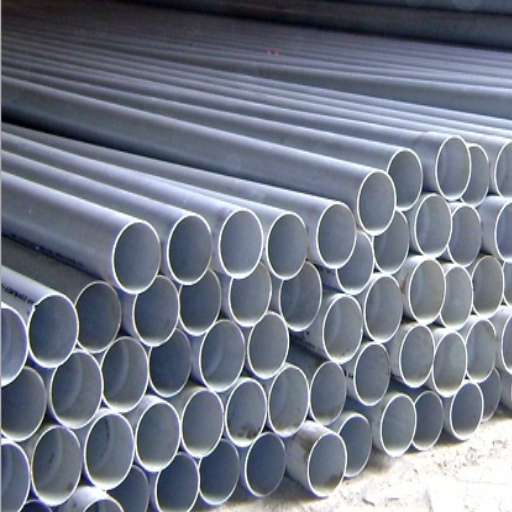
Flexibility in trench layout and slopes
Flexibility in trench layout and slopes is required for adapting excavation design to the fluctuating site conditions and project requirements. Such flexibility can permit the adjustment of various factors in trench design: the trench depth and angle may be altered to accommodate differences in soil type composition, groundwater conditions, or the presence of adjacent structures. An adjustable trench slope may be designed to promote the stability of the trench even in adverse environments and resist collapses induced by adverse conditions or to meet the requirements of safety regulations. Soils differ in their allowable angle of repose–for example, cohesive clay differs significantly from sand, which is granular–and this angle influences the slope of the trench required for structural stability.
As engineering and geotechnical technologies are undergoing major growth, trenching techniques are rendered ever more flexible. More modern equipment, combined with soil identification studies, maintains the ability of an engineer to make on-site changes to trench designs. Thus, walls may be sloped at very steep angles in dense clay soils while sloping at very shallow angles in loose and granular soils vulnerable to erosion.
In the pursuit of designing the trench layout with higher precision, consideration is also given to the use of Geographic Information System (GIS) and Computer-Aided Design (CAD) software. The mentioned tools permit engineers to model trench slopes accurately while incorporating topographic and subsurface data. This integration results in a streamlined workflow, adaptable to trench designs based on the most recent data. This adaptability level enables projects to become affordable, comply with regulations, and reduce risks during building.
Connecting and joining different pipe sections
Joining and fitting pipe sections is one of the fundamental activities of pipeline installation, whereby utmost precision needs to be followed for the reliability of the system. Depending on materials, application requirements, or environmental conditions, different joining techniques are applied. Welding is one such technique usually used for metallic pipes because it can form strong and leak-proof joints, particularly when systems concern high pressures; and advanced welding techniques, such as tungsten inert gas (TIG) welding, offer better control and suit intricate pipe joining.
Non-metallic pipes, such as PVC or HDPE, are, on the other hand, joined by adhesives or mechanical couplings. Solvent welding basically chemically welds PVC pipes; hence, they are considered seamless. Whereas mechanical couplings, such as flange couplings or threaded connections, do offer speedy joining and disjoining and thus become preferable when maintenance is periodically required for the pipeline.
Modern-day push-fit fittings are designed to afford spontaneity during installation and allow one to install pipes without using special tools or glues. For polyethylene pipes, on the other hand, the fusion is electro; electrical current is applied to create a single, uniform, and strong bond. Backed by highly precise modeling tools and current data fed in real-time, engineers are able to achieve optimized pipe assembly while minimizing operational risk.
Which Pipe is Better at Preventing Debris Buildup?
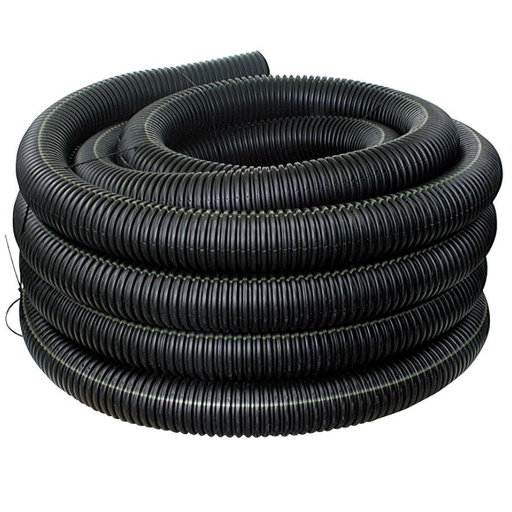
Comparing perforations in corrugated and PVC pipes
Corrugated pipes are sturdy, lightweight, and cheap, but tend to get clogged very easily and are less durable, whereas PVC pipes are highly durable, very efficient, and resistant to clogging but they are more expensive and less flexible in application.
|
Aspect |
Corrugated |
PVC |
|---|---|---|
|
Flexibility |
Adaptable |
Rigid |
|
Strength |
Fragile |
Robust |
|
Flow |
Inefficient |
Efficient |
|
Blockage |
Frequent |
Rare |
|
Setup |
Simple |
Complicated |
|
Expense |
Affordable |
Expensive |
|
Mass |
Lightweight |
Heavy |
|
Application |
Short-term |
Long-term |
|
Gradient Need |
Steep |
Gentle |
|
Pressure |
Weak |
Strong |
Effectiveness in filtering out soil and sediment
A detailed analysis of perforation design and material properties is necessary to evaluate their efficiency in filtering soils and sediments through either corrugated or PVC pipes. Corrugated pipes usually are fitted with many small perforations scattered all over their surface. These perforations can be slotted or circular and are designed to reject land particles and allow water to pass. But due to the larger surface area of perforations coupled with an unorganized pattern, sediment ingress can build up over time, especially in soils with fine particles.
In contrast, PVC pipes use fewer perforations, but they are more accurately designed and evenly spaced, thus controlling the infiltration of soil and sediment more efficiently. The stiff nature of PVC keeps the perforation shapes intact under different load conditions, minimizing deformation that could reduce filtering effectiveness.
According to empirical data, PVC pipes that have become perforated in an optimum pattern tend to perform better than corrugated pipes in finer soil types because of their layouts being optimally designed to restrict particle entry but still maintain adequate drainage. Effectiveness, though, may vary depending upon external factors such as water flow rate, soil type, and installation procedures. Appropriate placement of geotextile fabric or gravel bedding can thereby maximize sediment filtration and thus enhance performance of both pipe types in diverse environmental applications.
Reference sources
Frequently Asked Questions (FAQs)
Q: What are the main differences between PVC and corrugated pipes for a French drain system?
A: The primary differences lie in their strength, flexibility, and cost. PVC pipes, such as Schedule 40, are rigid and durable, making them suitable for high-pressure applications. Corrugated pipes are flexible and easier to install in irregular landscapes. Choosing between PVC and corrugated pipes depends on the specific requirements of your drainage project.
Q: How do I decide whether to use a corrugated or PVC drain pipe?
A: Consider the soil conditions, load requirements, and installation complexity. Corrugated pipes are much easier to work with in uneven terrain, while PVC drain pipes are better for areas where strength and durability are crucial. Evaluating these factors will help determine the best pipe for a French drain system.
Q: Is a perforated pipe necessary for my French drain?
A: Yes, a perforated pipe is essential for French drains as it allows water to enter the pipe and be directed away from the area. The pipe with holes effectively manages water accumulation and prevents flooding.
Q: What pipe sizes are typically used for French drains?
A: Common pipe sizes for French drains range from 3 to 6 inches in diameter. The size you choose depends on the volume of water you need to manage. Larger sizes are used for areas with significant water flow.
Q: Can I still use corrugated pipe if I have a sprinkler system?
A: Yes, you can use corrugated pipe alongside a sprinkler system. It’s important to ensure that the drainage pipe does not interfere with the sprinkler’s operation and that both systems are correctly installed to manage water efficiently.
Q: Are there any drawbacks to using black corrugated pipe?
A: While black corrugated pipe is flexible and easier to install, it may not be as strong or durable as PVC. It is more prone to crushing under heavy loads, which should be considered when deciding on the best pipe for French drain use.
Q: How does the installation of corrugated vs PVC drain pipe impact project cost?
A: Corrugated pipes are generally less expensive and easier to install, reducing labor costs. However, PVC pipes offer long-term durability, potentially saving money on future repairs. The initial cost versus longevity should be considered when planning your drainage system.
Q: What is the best pipe to use for landscape drain systems?
A: The best pipe for landscape drains depends on the specific needs of the area. For simple surface drains, a corrugated pipe may suffice. For more demanding applications, a PVC French drain pipe might be the better choice due to its strength and durability.


